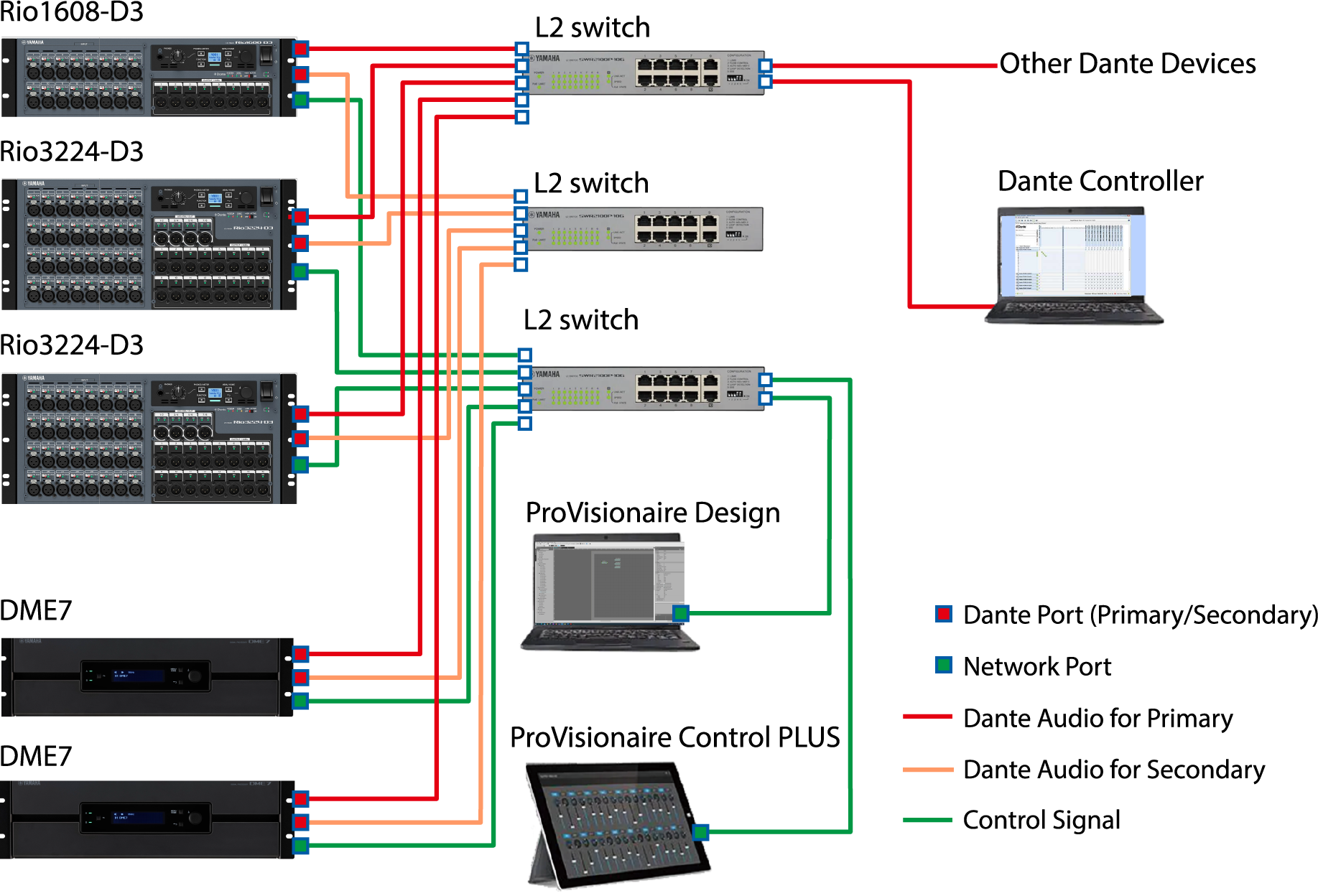About Dante
About Dante
■ Overview of Dante
The DME7 transmits digital audio signals by using the Dante protocol. Dante is a network audio protocol developed by Audinate. In a network environment compatible with Gigabit Ethernet, Dante has the advantage of being able to transmit multiple audio signals with different sampling frequencies/bit rates as well as device control signals within the same network.
For details on Dante, refer to the Audinate website.
http://www.audinate.com/
In addition, a variety of information about Dante can be found on the Yamaha Pro Audio website.
https://www.yamahaproaudio.com/
NOTE
-
With a Dante network, do not use the EEE function* of the network switch.
The EEE function may deteriorate the clock synchronization performance and interrupting audio.
Therefore, please note the following.-
When using managed switches, turn off the EEE function on all ports used for Dante. Do not use a switch that does not allow the EEE function to be turned off.
-
When using unmanaged switches, do not use switches that support the EEE function. In such switches, the EEE function cannot be turned off.
-
*EEE (Energy-Efficient Ethernet) function: Technology that reduces the power consumption of Ethernet devices during periods of low network traffic; also known as Green Ethernet or IEEE802.3az
About connection
There are two methods of connecting this model to a Dante network, and they can be used in combination.
Redundant connection
A redundant connection allows you to build a system that is more resistant to network failures than a daisy-chained network. A redundant connection consists of two circuits, a primary (main) circuit and a secondary (sub) circuit. Communication normally occurs on the primary circuit, but automatically switches to the secondary circuit if a problem occurs, such as the primary circuit being disconnected.

NOTE
-
If you wish to run Dante audio network and ProVisionaire Design’s network on the same computer, connect them using separate network interface cards.
-
The above illustration assumes that the SEC.PORT (Dante secondary port) setting is set to REDUNDANT for all Rio-D3s.
Daisy-chain connection
A daisy chain is a connection method where devices are strung together. Building such a network is simple and the number of network switches can be reduced.
As more devices are connected, the transmission delay increases between the devices furthest apart, requiring the latency setting to be increased in order to prevent sound interruptions on the Dante network. Moreover, if a system failure occurs due to a broken cable, etc., the network will be interrupted at that point, making transmission with devices beyond that point impossible.
With the latency set to the default (1.0 msec), up to ten Dante devices can be connected in a daisy chain. If eleven or more devices are connected, the communication delay within the network will increase, possibly causing interruptions in the sound. In order to avoid this, either increase the Dante latency setting or use an L2 switch (Gigabit Ethernet compatible) to split the network.
NOTE
-
Do not connect more than one port to the same external switch since this would create a network loop.
-
The following illustration assumes that the SEC.PORT (Dante secondary port) setting is set to DAISY CHAIN for all Rio-D3s.

The appropriate latency setting for signals sent and received over a Dante audio network differs depending on the connection method and scale. The following is an explanation of how to select the [Latency] setting based on the connections between Dante-compatible devices and the DME7.
■ Relationship between latency and hop count
The [Latency] setting for the Dante audio network depends on the hop count in that network.
The hop count is the number of switches between the farthest connections of Dante devices. A switch is built into not only each switching hub but also each DME7 and I/O device. The hop count provides a guideline for specifying the [Latency] setting.
Typical [Latency] settings for various hop counts are shown below.
| Hop count |
Latency
(ms) |
|---|---|
|
Up to 3 |
0.25 |
|
Up to 5 |
0.5 |
|
Up to 10 |
1.0 |
|
Up to 20 |
2.0 |
|
21 or more
|
5.0 |
